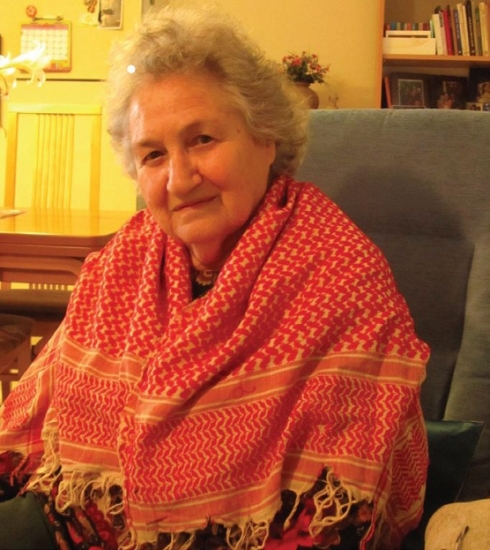
Tamar Snir wearing the keffiya given her by a Jordanian Legionnaire when she was taken into Jordanian captivity during the War of Independance
A tattered and almost torn in half red-and-white Jordanian keffiya, an emblem from the famed Israeli ‘Desert Animals’ commando force and a small tin casket fashioned from biscuit tins left behind by British soldiers in the 1940s, are prized possessions of 82 year-old Tamar Snir who was captured by Jordanian soldiers during the 1948 Israeli War of Independence.
The harrowing story of kibbutz-born Tamar, captured and imprisoned by Jordanian Legionnaires with the fall of the Etzion Bloc in 1948, is featured in a shortly-to-be-published book of the life of Tamar, the daughter of Meir and Mania Tzur, founder members of Kibbutz Mishmar HaEmek. It is a community that recently celebrated its 90th anniversary since the first group of pioneers undertook to drain swamps in, and plant trees on the hillsides around the Jezreel Valley.
For over a decade, Tamar, who worked for many years in the kibbutz archives established by her father, recorded interviews and wrote about the lives of the founder members before deciding that she should also write about her own kibbutz childhood, the years spent away building and then rebuilding Kibbutz Revadim, and her return to the extended Lower Galilee family fold.
The red-and-white keffiya had been wrapped around the shoulders of the then petrified teenaged Tamar by a kindly legionnaire during an arduous and frightening journey into captivity. The tin casket was made by Gideon Snir, her boyfriend at the time, who spent 10 months in a prison camp north of the Jordanian capital, Amman.
Tamar had befriended Gideon, a Palmach soldier serving in the Jezreel Valley before he was transferred to Kibbutz Revadim in the Etzion Bloc. With the Etzion Bloc under almost total siege by hostile local Arab gangs, and only occasional convoys managing to get through, the young couple kept in touch with great difficulty.
After a particularly heavy attack in which some members of the kibbutz were killed and many others wounded, 17-year-old Tamar decided her place was with them and after coaxing permission from the local army commander of Mishmar HaEmek, she left for Tel Aviv where she joined a convoy bound for Jerusalem. That convoy came under heavy attack en route, and when she finally reached the Etzion Bloc, Tamar found Gideon among the wounded, suffering from facial injuries and in a deep state of shock, having seen a close friend killed.
Other kibbutzim in the area had been abandoned and the fighting was concentrated around Revadim and Ein Tzurim.
“There were Morse code messages being sent between the kibbutz and Jerusalem at the time, and the major question was whether to surrender, and if so, under what conditions,” explained Tamar.
“We thought this to be an impossible situation. What sort of thing was that to demand of us, to surrender to the Arabs?”
“Finally the order came from Jerusalem that we should go into captivity, but to give ourselves up to the Jordanian Legionnaires and not to local Arab fighters. The major problem was that the Legionnaires were quite some distance away from us and we didn’t know whether they would be able to control the irregulars surrounding us.”
Eventually conditions of surrender were brokered between the Bayit Vegan headquarters and the Legionnaires through Morse code messages.
“We destroyed what we could of the kibbutz buildings, and then destroyed the rifles, revolvers and grenades at the last minute so they wouldn’t fall into enemy hands.”
One week later all the prisoners began a harrowing journey by way of a newly formed track running behind Jerusalem to Jericho, across the River Jordan and via Amman to a village called Maftak, where a tent camp known as Umm el Jamal had been set up to retain the hundreds of Etzion, Old City Jewish Quarter residents and other Jews captured by the Jordanians.
“We were so hungry and tired by the time they started to transport us to Jordan, we had no physical strength left and I was absolutely petrified as to what fate awaited us,” explained Tamar.
Packed into rickety trucks, standing up and with little space to move, the convoy travelled extremely slowly, arriving in Jericho as dusk fell.
“When we were passing through the town, the locals, realizing we were Jews, swore and spat at us and some stubbed out cigarettes on our legs through the wooden slats of the trucks – it was a nightmare.”
As the trucks passed slowly through the market area of the town, angry vendors in the street hurled vegetables and fruit at the prisoners. The journey from Hebron to Umm el Jamal took an agonizing 17 hours, the truck Tamar was travelling in breaking down in the middle of a desert area as the rest of the convoy disappeared into the night.
Close by was a cluster of tents. The agitated Legionnaires offloaded the women, and when the tent dwellers came out the prisoners were again subjected to verbal abuse and were spat upon.
“We were terrified. The Legionnaires tried to keep them away from us, shouting at them and firing their guns in the air. In fact, all along, the Legionnaires really tried to help and protect us as best they could.
“It was very dark when the truck broke down and I recall standing a little to the side, shivering with fright, absolutely terrified with the uncertainty of what was going to be. A Legionnaire, standing close to me, said not to be afraid, took off his keffiya and wrapped it around me. He also took off an insignia he had pinned to his uniform and put it in my hand.”
That insignia was that of the ‘Desert Animals’ – a group of Palmach soldiers who fought in the Negev. The Legionnaire told her he had taken it from a dead Jewish soldier, andtoday it sits in a cardboard box nestling in the folds of the keffiya.
With the aid of the locals the truck was fixed and they continued their journey to Umm el Jamal. Arriving in the darkness, Tamar heard Gideon’s distinctive whistle pierce the blackness. As they approached, they saw all the men sitting in rows on the ground, guarded by very nervous Legionnaires.
A few days after their arrival they were visited by King Abdullah, great-grandfather of the present day Jordanian king, Abdullah ll. “King Abdullah told us that he would protect us as if we were his own wives and daughters,” said Tamar.
After a week in captivity, the rickety trucks reappeared and the women were told they were being taken home. After passing Amman they were blindfolded for the rest of the journey. As dawn began to break they found themselves opposite a hill, and standing atop, a lone Palmach soldier who came running toward them.
“He was a very brave man! Here we were, almost 100 women and we all broke out in mass hysteria and swamped him. Eventually he succeeded in leading us over the hill where there were many other Palmachniks. We had been dropped off at Beit Lid near Kfar Yona,” she said with a laugh.
“The hardest part had been leaving the men behind, and it was almost 10 months before they were released and returned home.”
Gideon and his fellow prisoners put to good use their individual talents, creating handicraft workshops and discussion groups on a broad range of subjects. Gideon crafted the tin casket in one such workshop. He also made an album-cover using the same type of British Army biscuit tins, and engraved it with a rose. The album contains poems he wrote in captivity as well as program notes of cultural evenings he organized at Umm el Jamal.
When Gideon and the other male captives were finally released, the couple rejoined other Revadim survivors in rebuilding their kibbutz, not at the same site, but south of Gedera.
A decade later, homesick for her own kibbutz and close family in Mishmar HaEmek, Tamar and Gideon returned to the Jezreel Valley, where they eventually brought up their three daughters.
After gently refolding the keffiya and popping the pair of camels on a never-ending journey back into the folds, Tamar replaces them in the cardboard box before slotting the box file back into its place among half a dozen others, all containing papers and memorabilia of times long gone by.

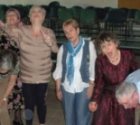 Let’s have a bit of Playback
Let’s have a bit of Playback-1372659501.jpg) Buying New Construction in Israel
Buying New Construction in Israel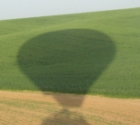 A lot of hot air - ballooning
A lot of hot air - ballooning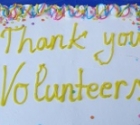 A new website in English - on Volunteering - Launched in Israel
A new website in English - on Volunteering - Launched in Israel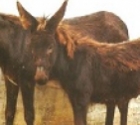 Help Needed for Abused Horses and Donkeys
Help Needed for Abused Horses and Donkeys Heather's Heseg
Heather's Heseg Lydia Aisenberg
Lydia Aisenberg